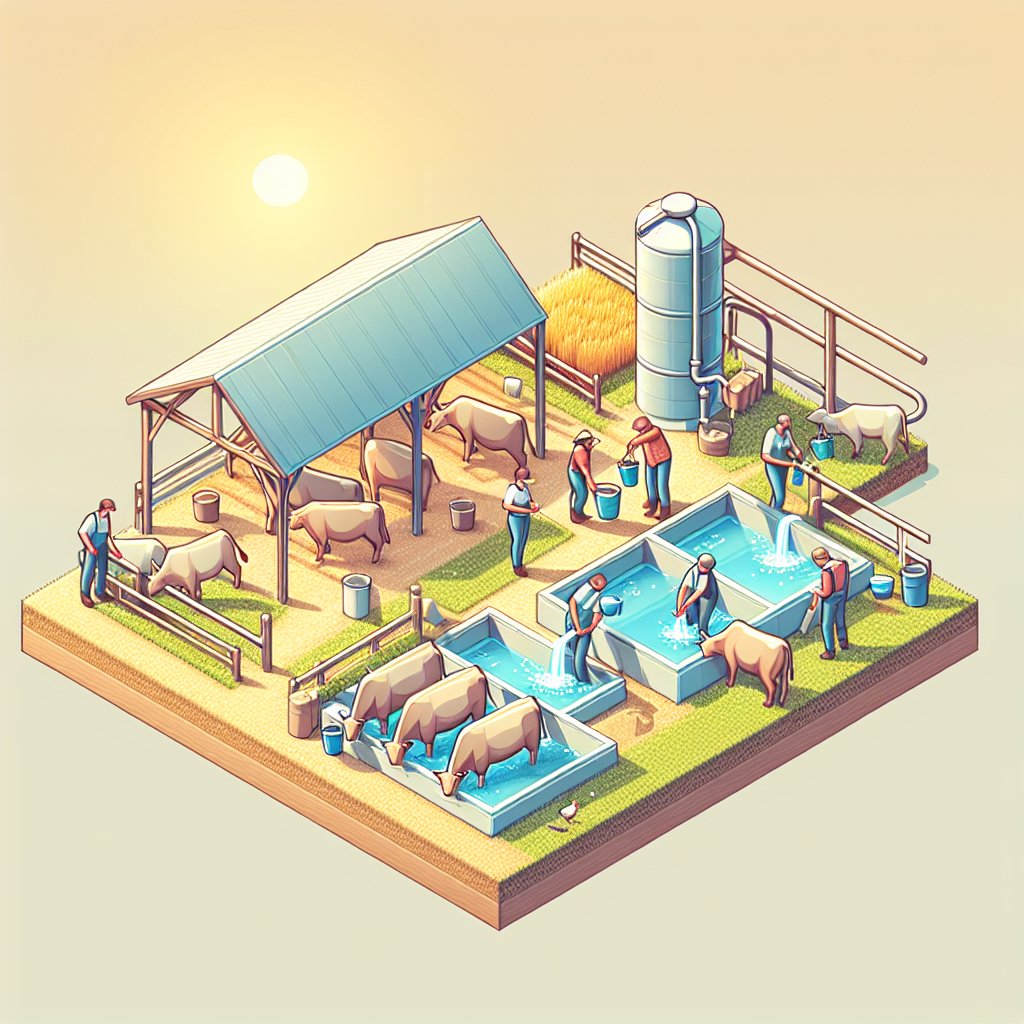
Heat stress is a significant concern in the agricultural industry, affecting the health and productivity of farm animals. As global temperatures rise, managing heat stress becomes increasingly crucial for farmers to ensure the well-being of their livestock and maintain efficient production levels. This article explores various strategies and practices that can be implemented to mitigate the effects of heat stress on farm animals.
Understanding Heat Stress in Farm Animals
Heat stress occurs when animals are unable to dissipate excess body heat, leading to elevated body temperatures and physiological stress. This condition can result in reduced feed intake, decreased milk production, lower fertility rates, and, in severe cases, death. Understanding the factors contributing to heat stress is essential for developing effective management strategies.
Causes of Heat Stress
Several factors contribute to heat stress in farm animals, including high ambient temperatures, humidity, solar radiation, and poor ventilation. Animals with dark coats, high metabolic rates, or those in late pregnancy are particularly susceptible. Additionally, overcrowding and inadequate access to water can exacerbate the effects of heat stress.
Signs and Symptoms
Recognizing the signs of heat stress is crucial for timely intervention. Common symptoms include increased respiration rates, excessive panting, drooling, lethargy, and reduced feed intake. In severe cases, animals may exhibit open-mouth breathing, staggering, or collapse. Monitoring these signs allows farmers to take prompt action to alleviate stress.
Strategies for Managing Heat Stress
Effective management of heat stress involves a combination of environmental modifications, nutritional adjustments, and animal management practices. Implementing these strategies can help reduce the impact of heat stress on farm animals.
Environmental Modifications
Creating a comfortable environment is key to minimizing heat stress. Providing shade, improving ventilation, and using cooling systems such as fans or misters can help lower ambient temperatures. Planting trees or installing shade structures in pastures and barns can offer relief from direct sunlight.
- Shade Structures: Installing shade cloths or constructing permanent shelters can significantly reduce solar radiation exposure.
- Ventilation: Ensuring adequate airflow in barns and enclosures helps dissipate heat and maintain a cooler environment.
- Cooling Systems: Using fans, misters, or sprinklers can effectively lower temperatures and provide relief to heat-stressed animals.
Nutritional Adjustments
Adjusting the diet of farm animals can help mitigate the effects of heat stress. Providing high-quality forage, balanced rations, and ensuring adequate water intake are essential components of nutritional management.
- Water Availability: Ensuring constant access to clean, cool water is crucial for maintaining hydration and regulating body temperature.
- Feed Management: Offering feed during cooler parts of the day and providing easily digestible, high-energy diets can help maintain intake levels.
- Electrolyte Supplements: Adding electrolytes to water or feed can help replenish minerals lost through sweating and maintain electrolyte balance.
Animal Management Practices
Implementing specific management practices can further reduce the impact of heat stress on farm animals. These practices include adjusting handling schedules, monitoring animal health, and selecting heat-tolerant breeds.
- Handling Schedules: Conducting activities such as milking, feeding, and transportation during cooler parts of the day can minimize stress.
- Health Monitoring: Regularly checking for signs of heat stress and providing prompt veterinary care can prevent severe health issues.
- Breed Selection: Choosing breeds with higher heat tolerance can improve resilience to heat stress in the long term.
Conclusion
Managing heat stress in farm animals is a multifaceted challenge that requires a comprehensive approach. By understanding the causes and symptoms of heat stress and implementing effective management strategies, farmers can protect their livestock from the adverse effects of high temperatures. Environmental modifications, nutritional adjustments, and animal management practices are essential components of a successful heat stress management plan. As climate change continues to impact global temperatures, proactive measures will be crucial in ensuring the health and productivity of farm animals.

